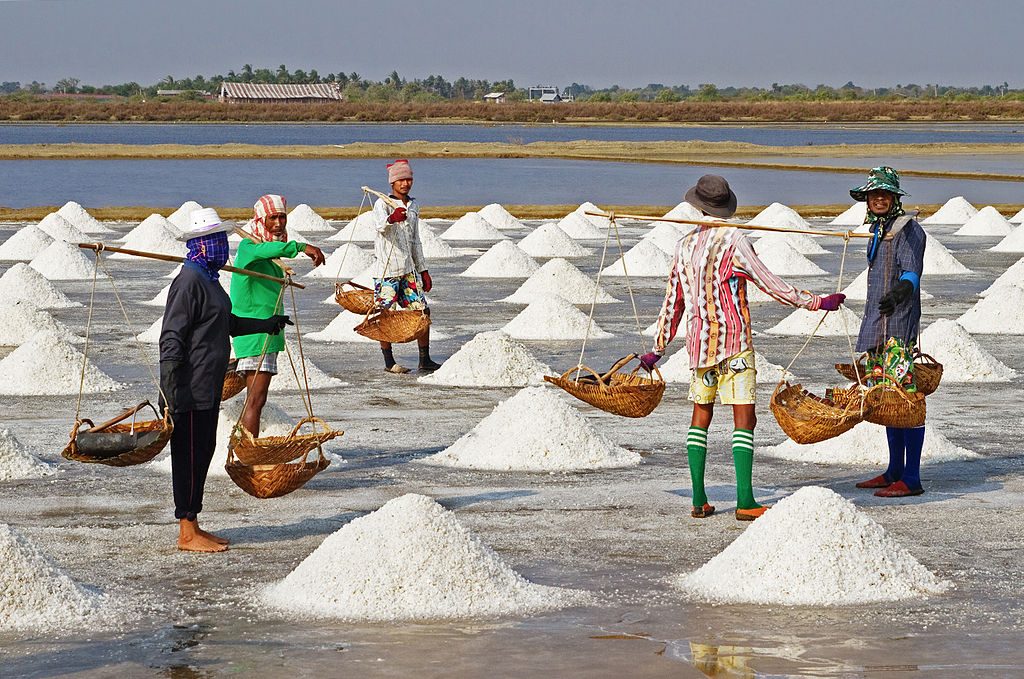Many people wonder why sea water is actually salty, while the water from streams, rivers and lakes usually doesn’t taste like salt. A classic everyday question, with a simple answer that consists of two parts.
From a chemical point of view, salt water is found in all streams, rivers and lakes. Only in most cases is the salt concentration much lower than in the seas, which means that the salt can often not be tasted in smaller waters.
But why is the water of the oceans so much saltier than the water of most other waters, which in almost all cases end up in the sea? Sea water is salty for two reasons:
- Salt has been released from rocks on the sea floor since the formation of the Urozeans.
- Streams and rivers carry salts into the sea. If sea water evaporates, the salt remains.
Oceanographers describe the salinity with the unit Practical Salinity Units , PSU for short , which defines the salt in grams per kilogram of sea water. The average salinity of the oceans today is 34.7 grams of salt per kilogram of sea water (3.47 percent or rounded 35 PSU). In figurative terms, this is about three tablespoons of salt per liter of water.

However, this is the global average. The regional differences vary enormously! In waters near the equator, where a lot of water evaporates, the salt concentration is higher. In the oceans, where larger amounts of fresh water enter the oceans through water-rich rivers and less water evaporates, the salinity is lower.
In waters near the equator, where a lot of water evaporates, the salt concentration is higher.
A good example of this is the Baltic Sea. The salinity of this water is just 0.3 to 2 percent (3 to 20 PSU) – up to 1 PSU is called fresh water . This low salinity is due to the fact that relatively little water evaporates in the Baltic Sea and many water-rich but low-salt rivers flow into the Baltic Sea.
Why Only a Few Rivers have Salt Water
In contrast to the oceans, the water in rivers is relatively short. This means that the water can only dissolve a small amount of salt ions from the underground on the way to the sea. Even slightly acid rainwater, which dissolves mineral salts from the soil and then flows into streams and rivers, cannot enrich these rivers with salt so strongly that one can taste them.
Salt lakes with up to 440 PSU
It looks a little different with lakes. In addition to huge and beautiful freshwater lakes, there are also numerous salt lakes on Earth. These lakes are usually fed by saline sources or are mostly large lakes with no drain in very warm regions. Here, as with the seas, evaporation leads to higher salt concentrations.
An example of a large salt lake would be the Dead Sea with a salinity of 28 percent (280 PSU), whereby the water in this 810 square kilometer lake (status 2020) at a depth of around 50 meters has a salinity of up to 33 percent (330 PSU) ) can reach. Some lakes in the Antarctic dry valleys are even more extreme, such as Don Juan Lake, which has a salt content of 44 percent (440 PSU).































Discussion about this post